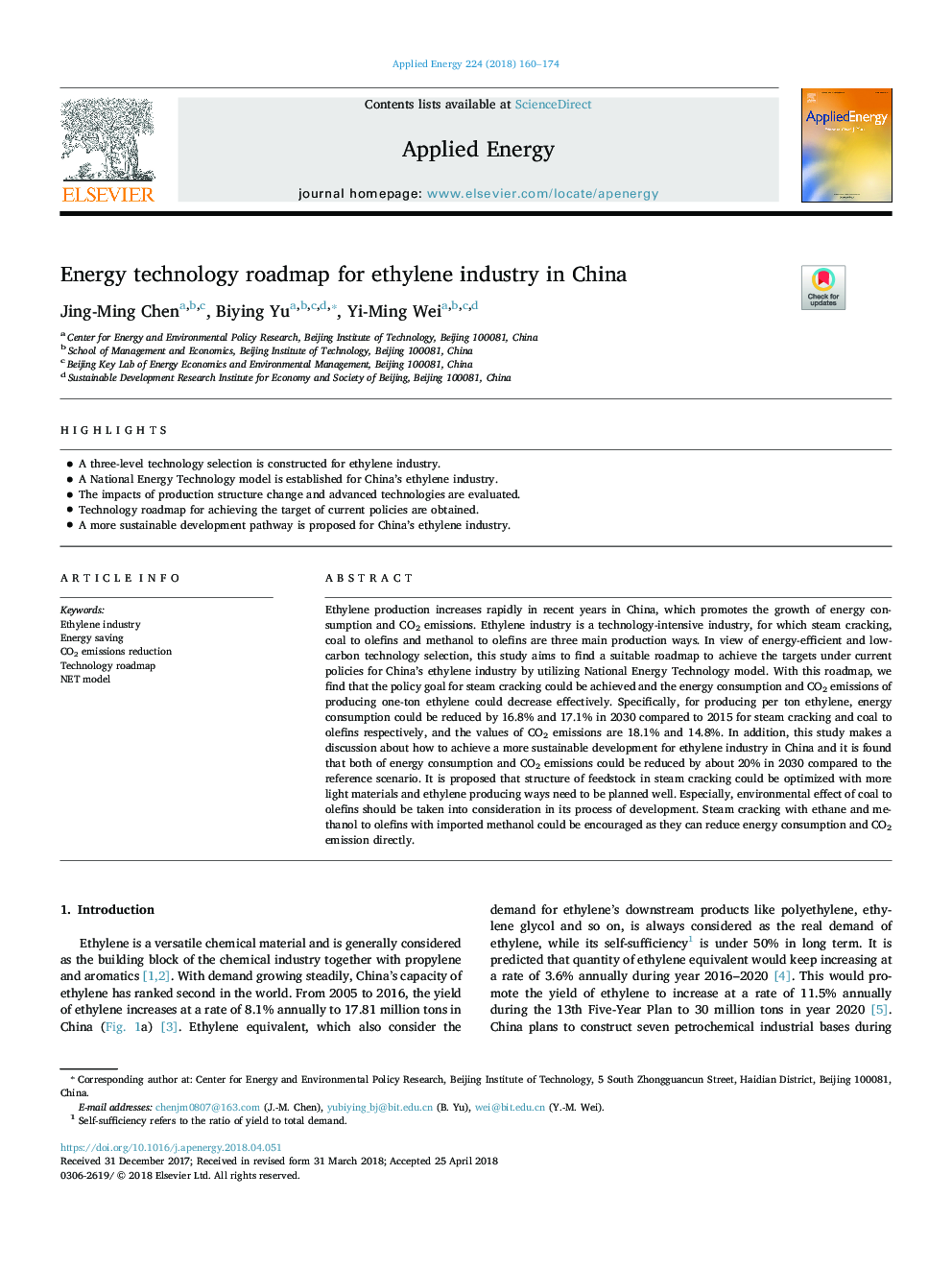| Article ID | Journal | Published Year | Pages | File Type |
|---|---|---|---|---|
| 6680000 | Applied Energy | 2018 | 15 Pages |
Abstract
Ethylene production increases rapidly in recent years in China, which promotes the growth of energy consumption and CO2 emissions. Ethylene industry is a technology-intensive industry, for which steam cracking, coal to olefins and methanol to olefins are three main production ways. In view of energy-efficient and low-carbon technology selection, this study aims to find a suitable roadmap to achieve the targets under current policies for China's ethylene industry by utilizing National Energy Technology model. With this roadmap, we find that the policy goal for steam cracking could be achieved and the energy consumption and CO2 emissions of producing one-ton ethylene could decrease effectively. Specifically, for producing per ton ethylene, energy consumption could be reduced by 16.8% and 17.1% in 2030 compared to 2015 for steam cracking and coal to olefins respectively, and the values of CO2 emissions are 18.1% and 14.8%. In addition, this study makes a discussion about how to achieve a more sustainable development for ethylene industry in China and it is found that both of energy consumption and CO2 emissions could be reduced by about 20% in 2030 compared to the reference scenario. It is proposed that structure of feedstock in steam cracking could be optimized with more light materials and ethylene producing ways need to be planned well. Especially, environmental effect of coal to olefins should be taken into consideration in its process of development. Steam cracking with ethane and methanol to olefins with imported methanol could be encouraged as they can reduce energy consumption and CO2 emission directly.
Related Topics
Physical Sciences and Engineering
Energy
Energy Engineering and Power Technology
Authors
Jing-Ming Chen, Biying Yu, Yi-Ming Wei,
